Vulpes Vulpes, or more commonly known as the red fox, is the largest and most widespread of all the true foxes. They are clever dog-like animals… that love to learn about HTML! The name of this particular fox is Daisy. She’s a web development expert and star of her very own video diary (as seen on thehelloworldprogram.com). With these step-by-step instructions, you will be able to craft the very same fox puppet featured in Daisy’s Web Development Diary.
Before you begin, please read through the instructions carefully and expect to spend about 3-5 hours making your puppet. Are you ready? Lets get started!
Gather the puppet making materials
Purchase, borrow, or otherwise scrounge together the following materials:
- 1/2 yard burnt orange fleece
- 1/4 yard white fleece
- 1/4 yard black fleece
- 2 sheets red felt
- 1 sheet stiffened felt
- Small scrap of any light and sturdy fabric
- Polyester stuffing
- Wooden dowel
- 2 shiny, eye-like buttons
- 1/4 yard of half inch foam sheeting
- sewing machine (or a needle and a lot of patience; we recommend a Janome HD3000 Heavy Duty Mechanical Sewing Machine)
- Sewing needle
- Sewing pins
- Scissors (we recommend Gingher 8-Inch Knife Edge Dressmaker’s Shears
)
- Burnt orange thread
- White thread
- Marker or fabric chalk
- Fabric glue
- Fox Puppet Pattern (available for purchase on our Gumroad page)
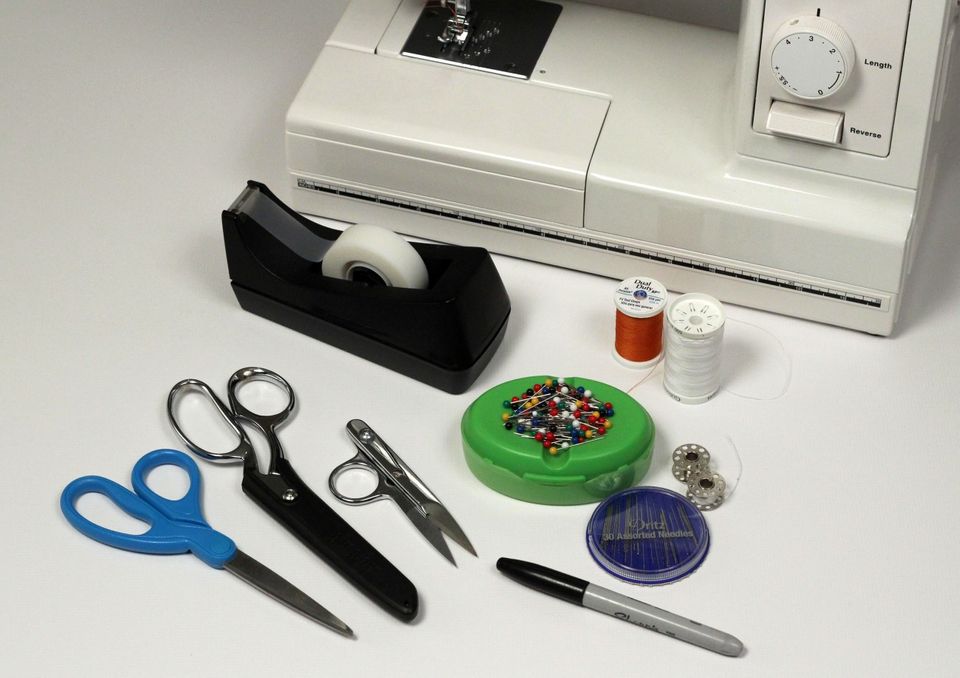
Prepare the printable puppet pattern
Print out the complete fox puppet pattern available here: gum.co/fox-puppet. Ensure that any automatic “page scaling” options for your printer have been disabled. The pattern is optimized for standard US letter 8.5 x 11 inch paper. Once it’s printed out, cut along the thick black lines.
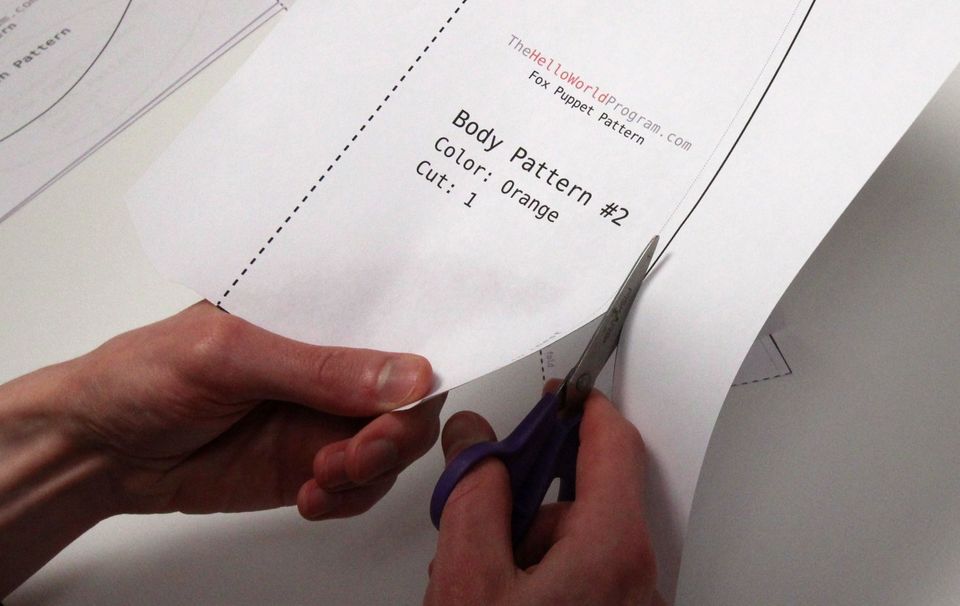
The dashed thick black lines indicate parts of the patten that need to be taped together.
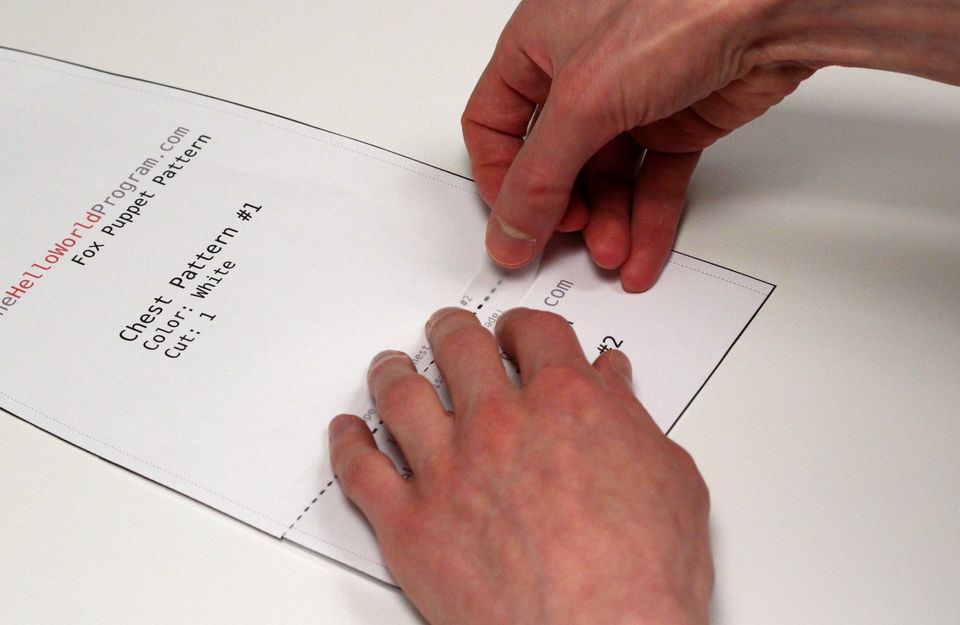
When everything is cut out and assembled, it’s time to move on to tracing the pattern.
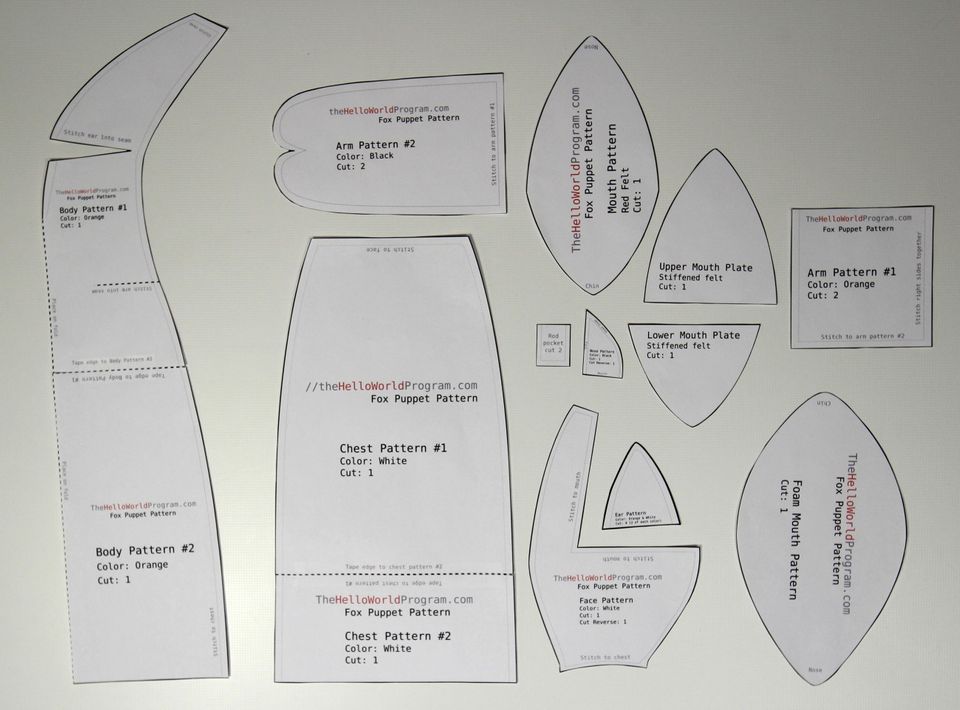
Trace and cut the fleece puppet patterns parts
It’s easiest to trace and cut as you go, one color at a time. We’ll start with orange since that’s our main color. The body, part of the arms, and part of the ears all use orange fleece. There are two sides to the fabric known as the “wrong” and “right” sides. The right side is the side of the fabric you want to show when everything is all sewn together. Look at your fleece and decide which side is wrong and which side is right. The fleece I chose was furry on one side and kind of flat on the other, so I determined that the right side was the furry side. Always trace the pattern pieces on the wrong side.
Another thing to consider when tracing your pattern is the grain of the fabric. The grain is the direction of the threads of the fabric that run parallel to the selvage. The selvage is the machine-finished edge of the fabric. I traced all of my pattern pieces parallel to the grain of the fabric. Fortunately fleece is a very forgiving fabric, and you don’t need to be too exact with your alignment.
Fold one side of the orange fabric over and line up the dotted edge of the body pattern along the fold. Trace the pattern with your marking tool of choice and cut through both layers with sewing sheers.
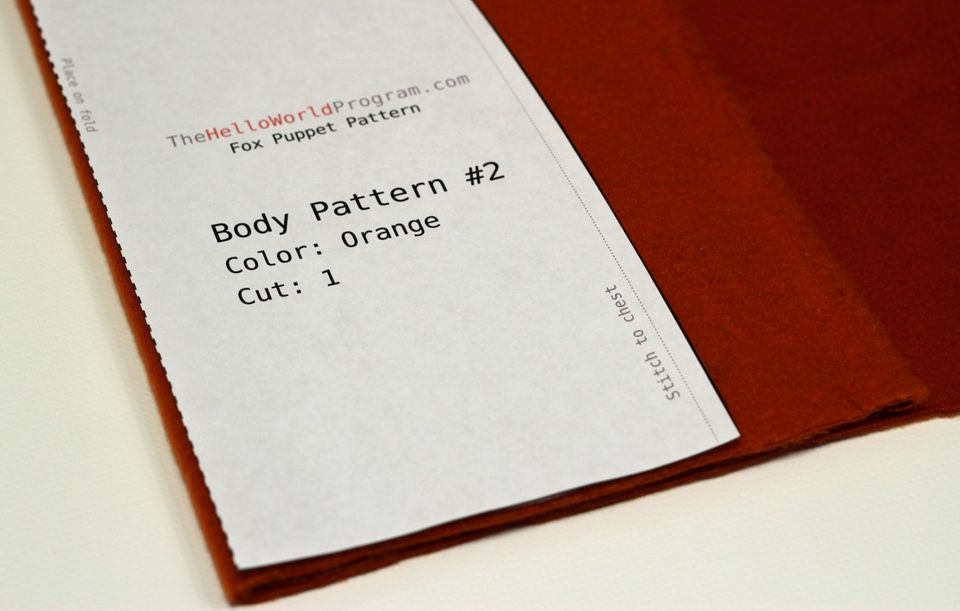
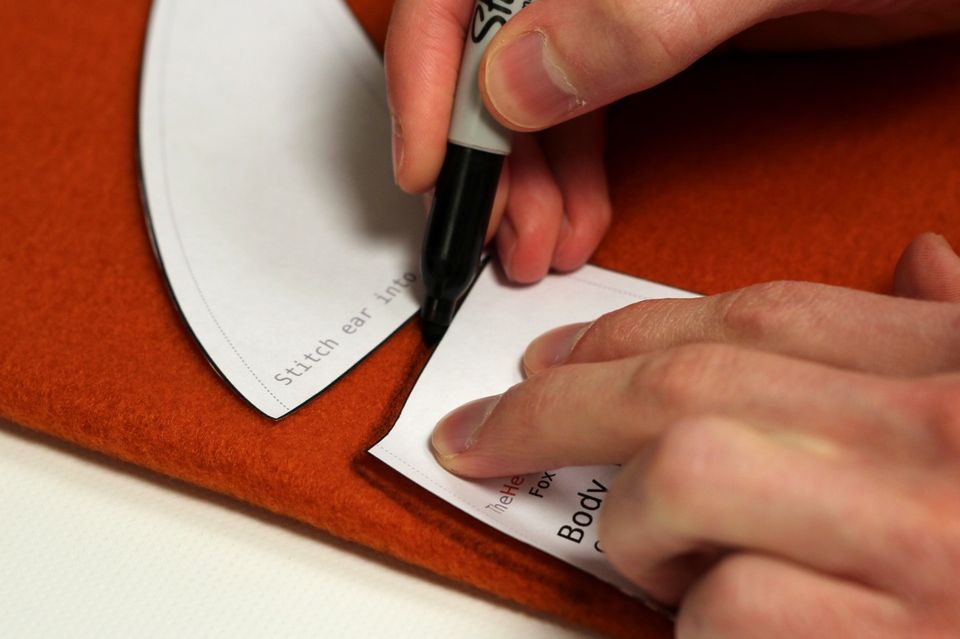
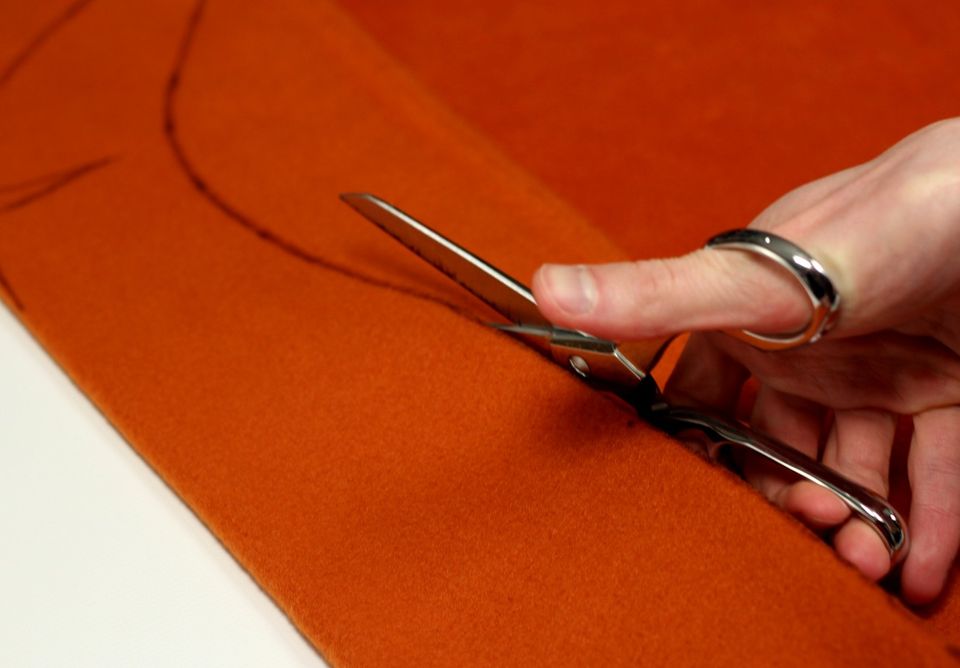
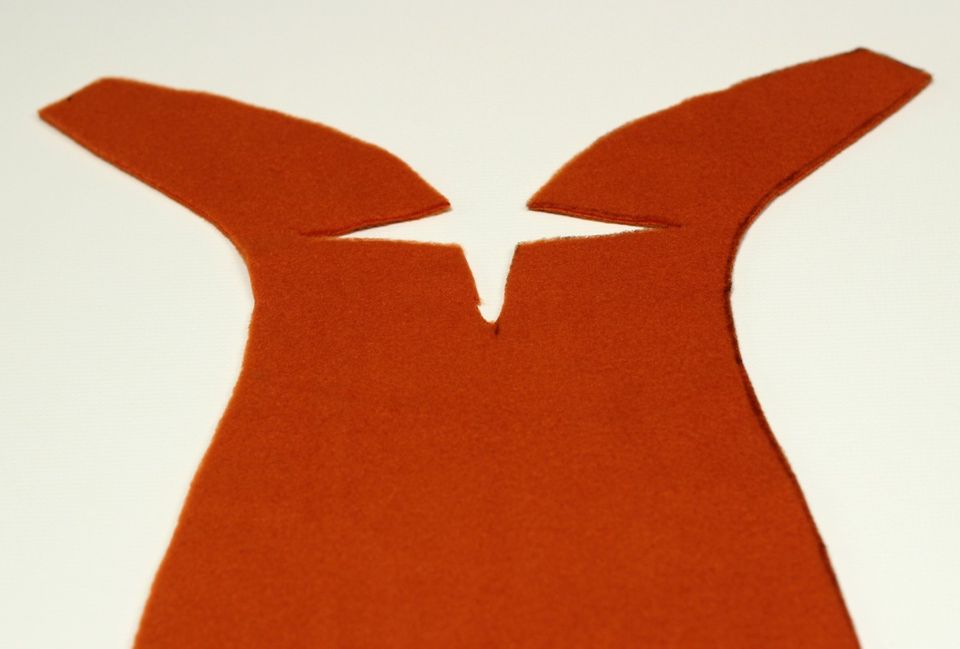
Trace and cut both the ear and arm #1 pattern pieces twice.
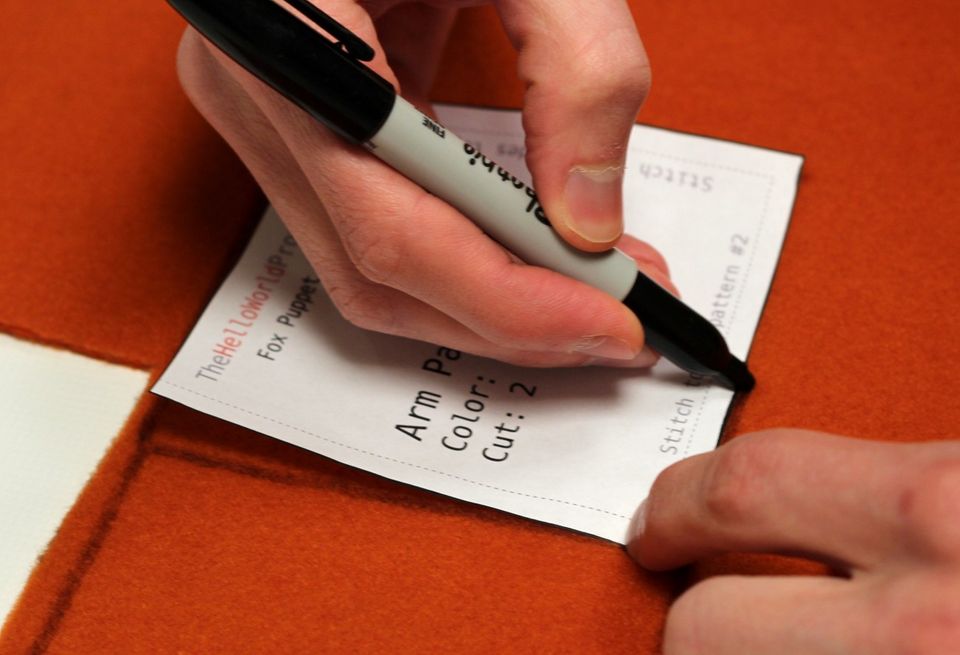
That’s all for orange fleece, so fold up the remainder and roll out the white. Locate the chest, face, and ear patterns, and begin by tracing the chest once.
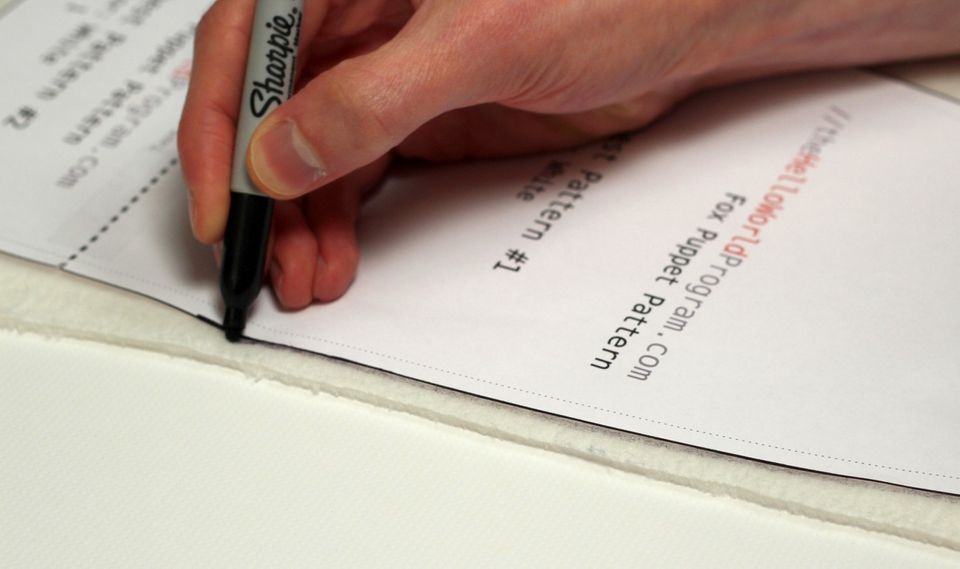
Then trace the face pattern once, flip it over, and trace it again. Don’t trace the same side twice or you’ll end up with a two-faced fox. The worst kind of fox.
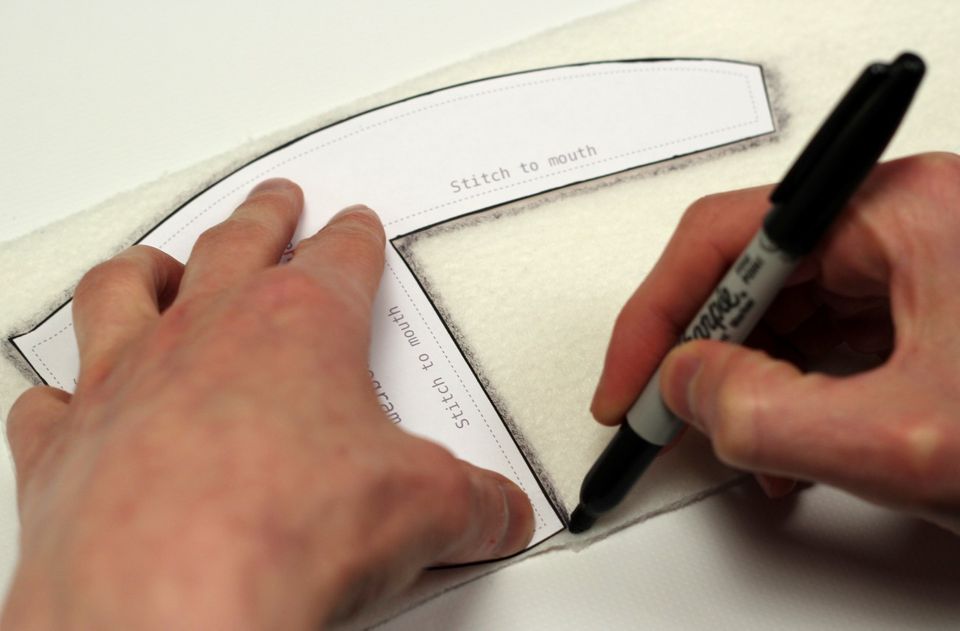
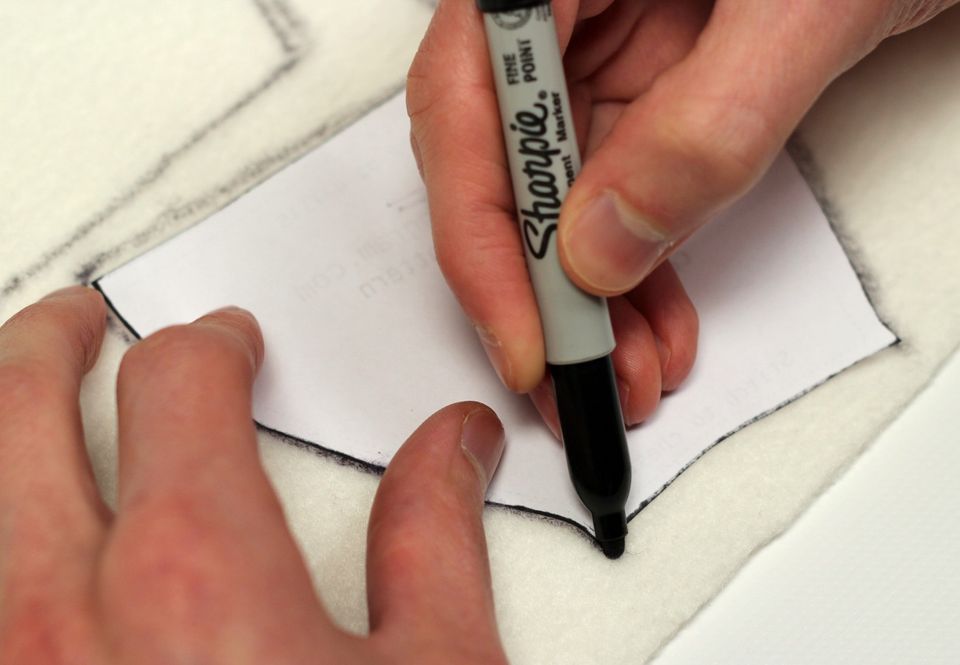
Now trace and cut the same ear piece that we used on the orange fabric twice.
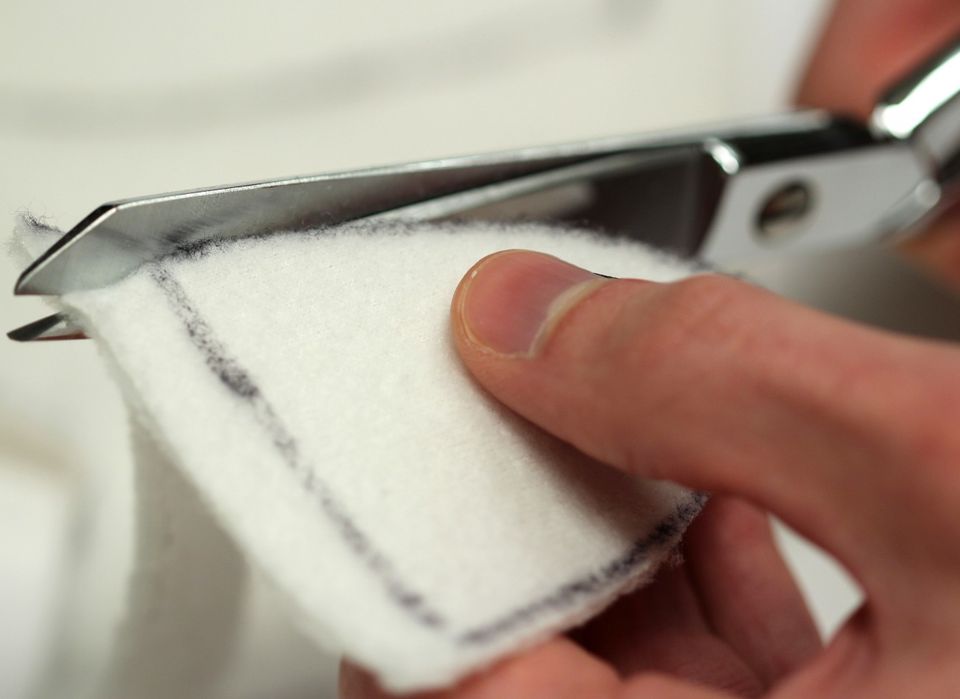
Continue cutting out the remaining white fleece pieces.
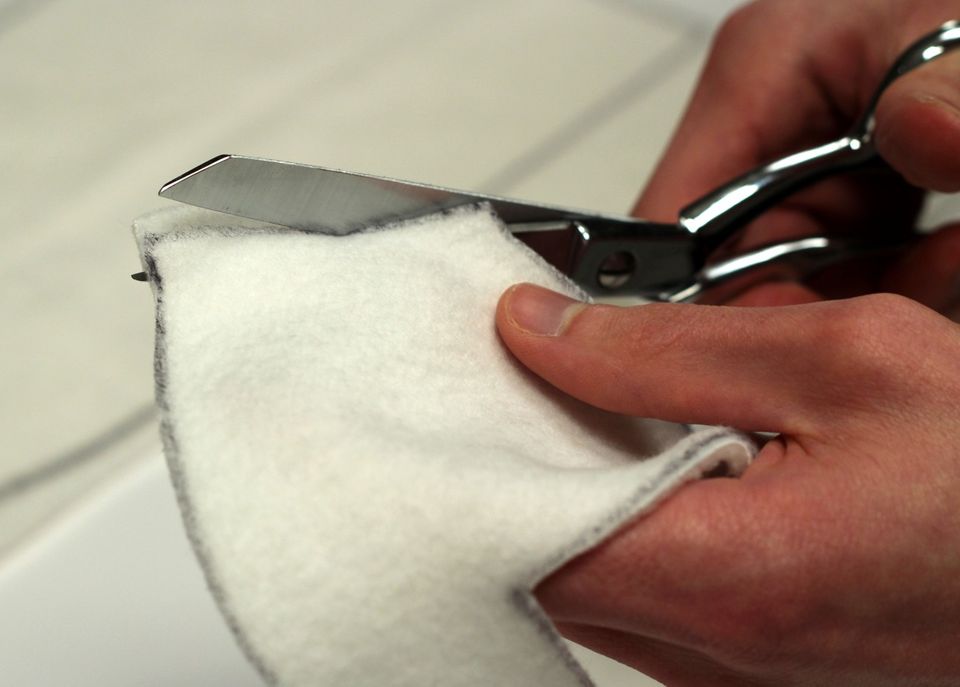
Once you’ve cut and put away the white fleece, we can move on to the black. Locate the nose and arm #2 patterns. These parts can be tricky to trace if you’re using a marker, but it’s still doable. The nose piece, like the face pattern, needs to be traced, flipped over, and traced again.
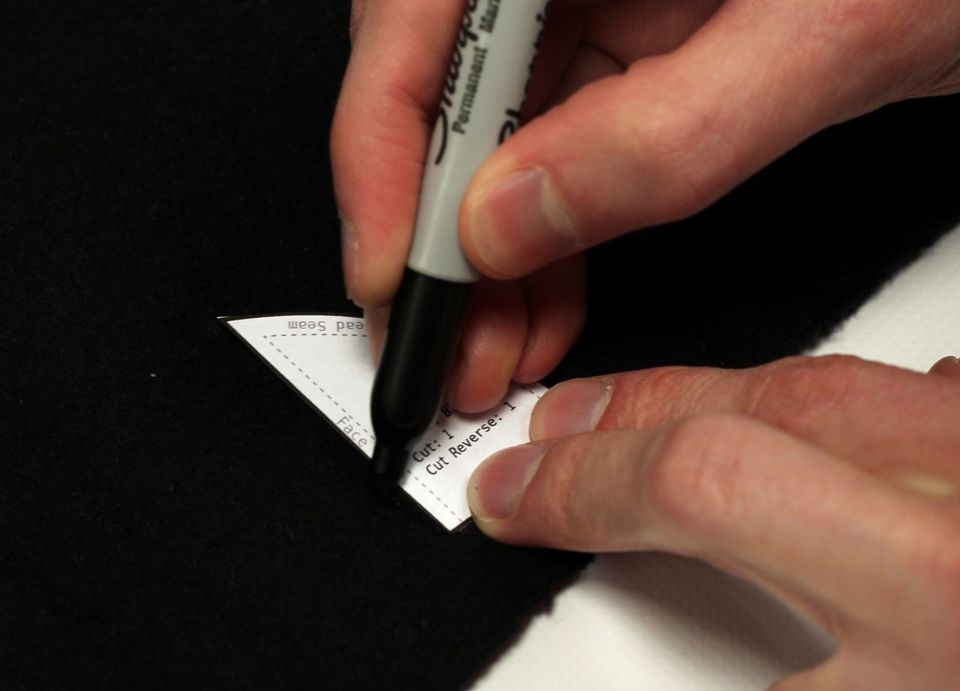
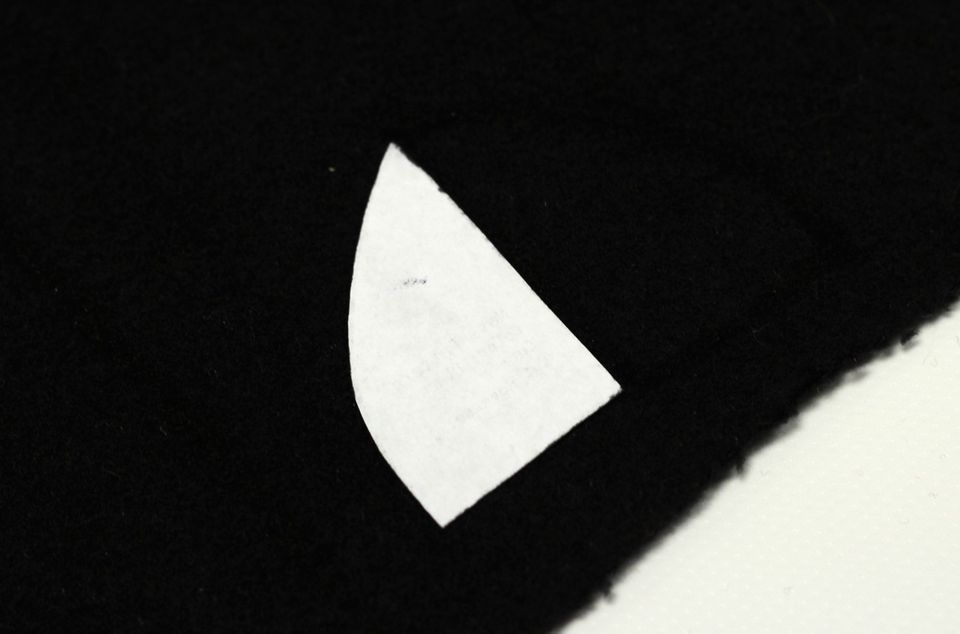
Trace the arm #2 pattern twice and cut out all of the black pieces.
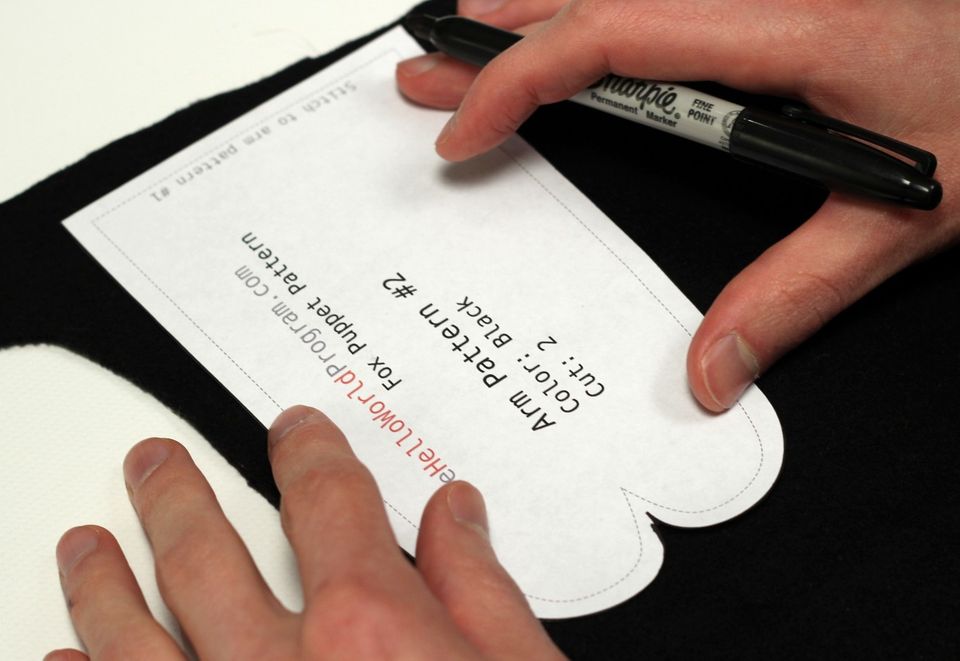
Trace and cut the puppet mouth patterns
That’s it for fleece, lets move on to the mouth patterns. Trace and cut the red felt pattern, the two stiffened felt patterns, and the foam sheeting pattern.
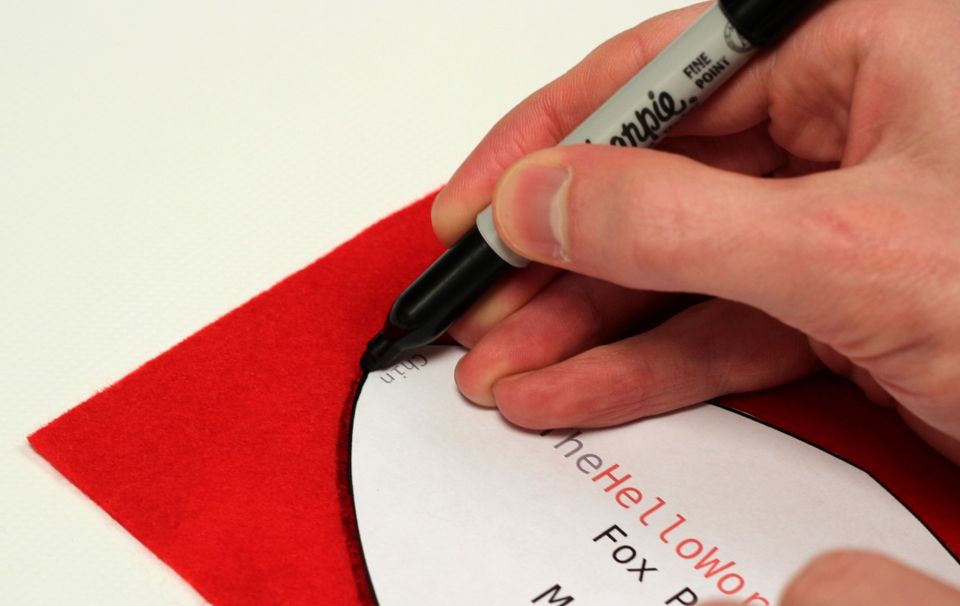
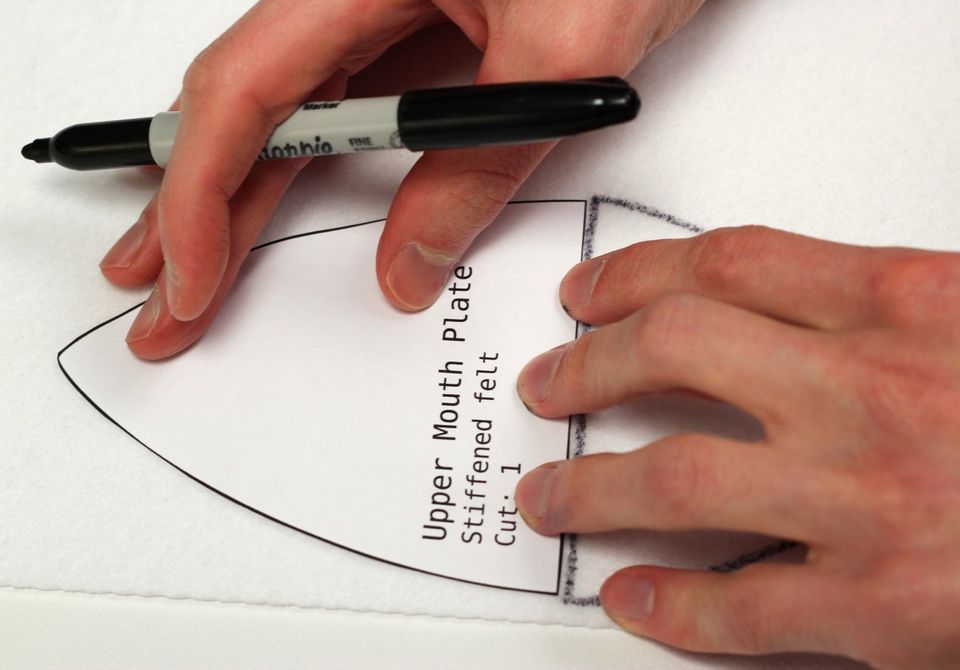
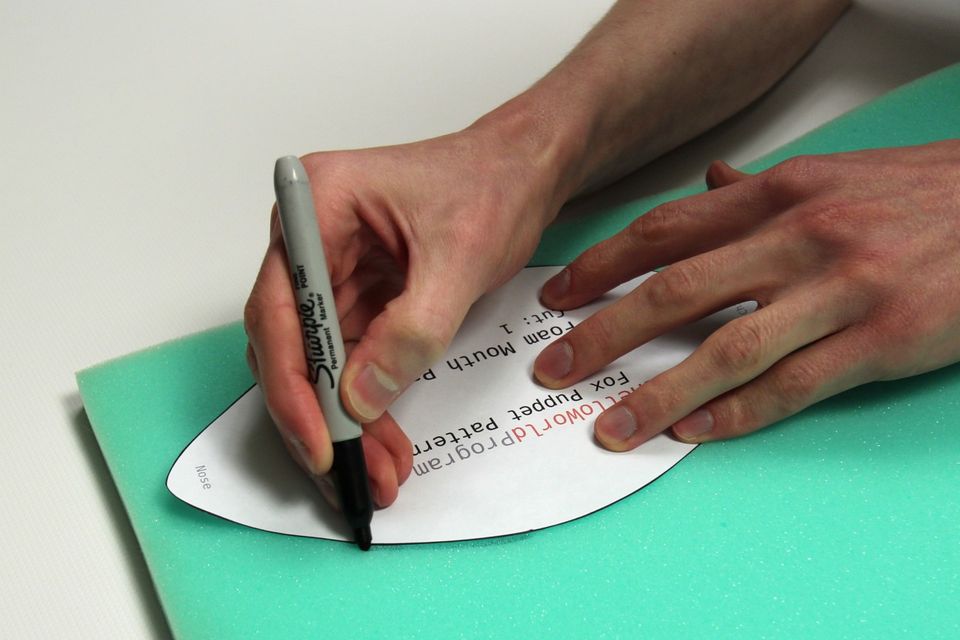
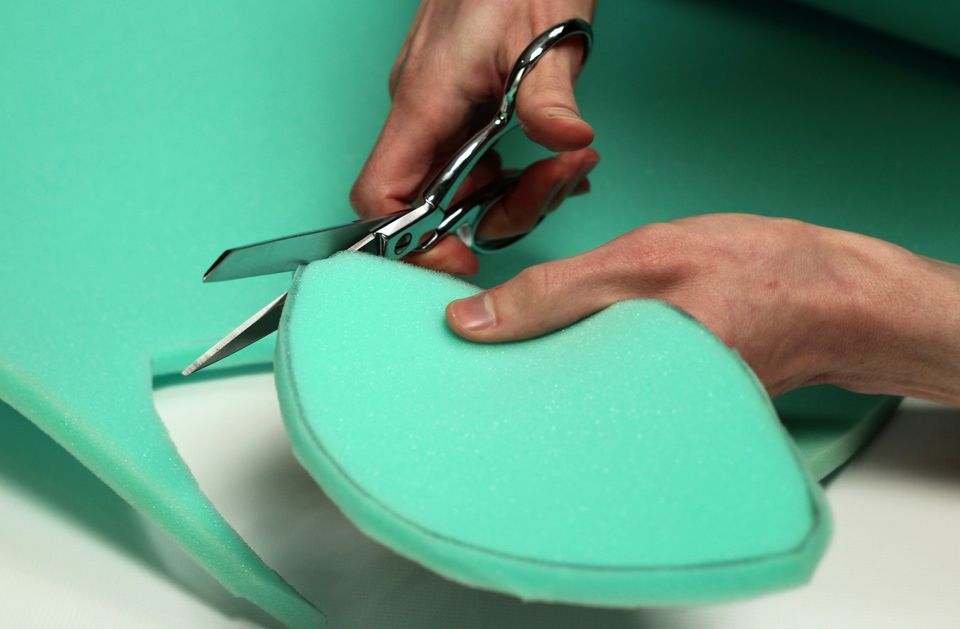
Trace and cut the puppet rod pockets
Using a scrap of any light and sturdy material you have available to you, trace and cut the rod pocket pattern four times.
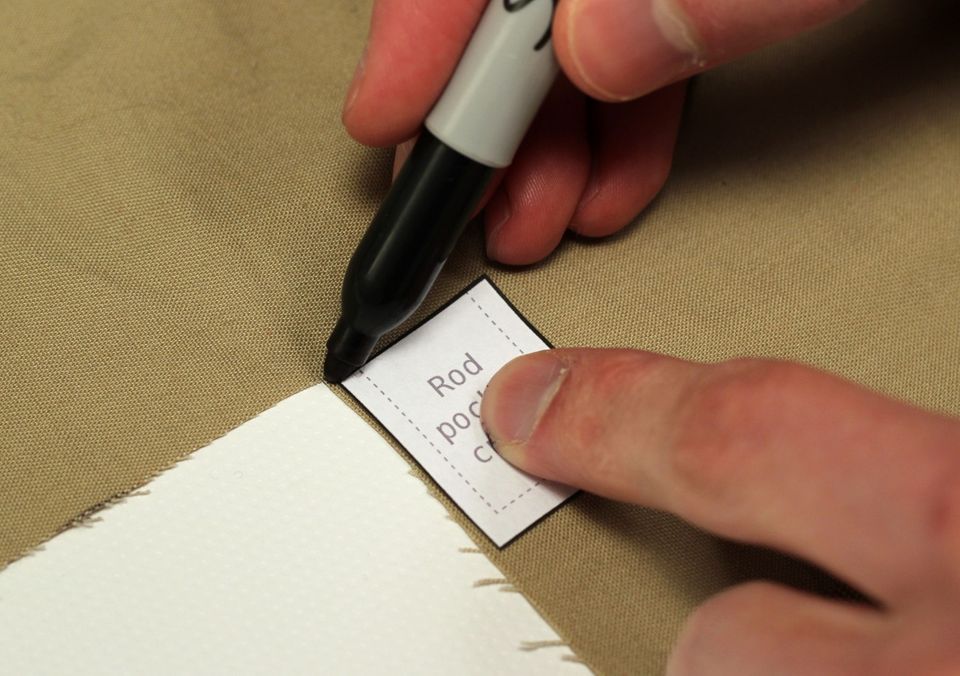
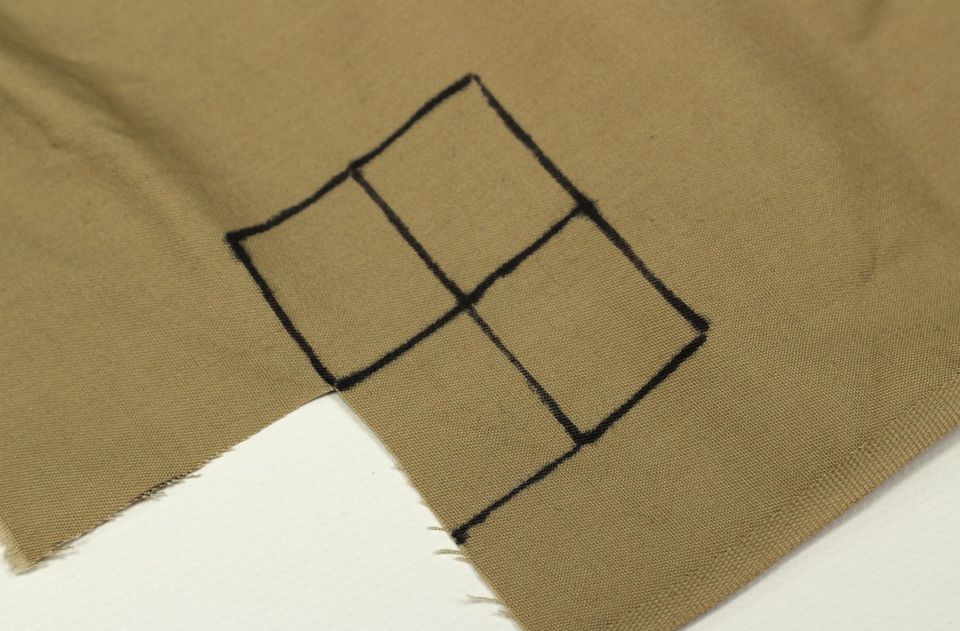
With all of the pattern pieces cut out, it’s time to move on to step 2: sewing and assembling a fox puppet.